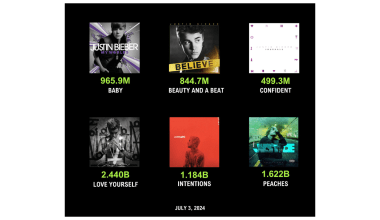Have you ever listened to a song and felt completely swept away by its words? Those heartfelt, relatable, or downright catchy lyrics often make a song unforgettable. But have you ever wondered how those lyrics come to life? Creating lyrics for a song is both an art and a skill, blending creativity with technique. Let’s dive into the process of crafting compelling lyrics for a song—whether you’re starting with a melody or just an idea.
The Power of Lyrics in a Song
Lyrics are the soul of a song. They’re what listeners sing along to, what they remember, and often what they connect with emotionally. Whether it’s a heartfelt ballad, an energetic pop hit, or a soulful blues number, the lyrics tell the story. Understanding their importance is the first step in creating something truly meaningful.
Transitioning from an idea or a tune to full-fledged lyrics can feel daunting. But don’t worry—this process is easier when broken into manageable steps. Let’s get started.
Step 1: Start with the Song’s Theme
Every song tells a story, and every story has a theme. Ask yourself: what is the heart of your song? Is it about love, loss, triumph, or something entirely unique? Identifying this theme will guide the tone and structure of your lyrics.
For example, if your theme is love, consider the perspective you want to take. Is it about falling in love, heartbreak, or celebrating a lasting bond? The possibilities are endless, but having clarity on your theme will save you time and effort.
Step 2: Find Your Hook
The hook is the most memorable part of your song—the lyrics that get stuck in your listeners’ heads. It could be a catchy chorus or a single line that captures the song’s essence. Spend time brainstorming this, as it will likely be the anchor for your lyrics.
One trick to finding the perfect hook is to listen to similar songs in your genre. Pay attention to how they structure their hooks and what makes them stand out.
Step 3: Match the Lyrics to the Melody
If you already have a melody, use it as a foundation. Hum along to the tune and let your words flow naturally. Sometimes, the rhythm of the melody can inspire specific word choices or phrases.
Not sure where to start? Begin with simple phrases that align with the beat. For example, if your melody is upbeat, your lyrics might include words that convey energy, excitement, or fun.
Step 4: Write from the Heart
One of the best ways to connect with your audience is to write lyrics that come from your own experiences or emotions. Authenticity resonates, and people can often tell when lyrics feel genuine.
If you’re struggling to find inspiration, try journaling about the theme of your song. Write freely without worrying about structure or rhyme. Later, you can sift through your thoughts and pick out phrases or ideas that stand out.
Step 5: Use Simple and Relatable Language
Great lyrics don’t have to be complex. In fact, the most memorable songs often use simple language. Focus on crafting lines that are easy to understand and resonate with a wide audience.
For example, instead of saying, “The profound depths of my affection for you are immeasurable,” you could write, “I love you more than words can say.” Simple, clear, and heartfelt.
Step 6: Embrace Rhymes and Rhythms
While not all songs need to rhyme, rhymes can make lyrics more engaging and easier to remember. Experiment with different rhyming patterns, such as AABB, ABAB, or free verse.
Similarly, pay attention to the rhythm of your words. Even if your lyrics don’t rhyme, they should still flow naturally with the music. Reading your lyrics aloud can help you catch awkward phrases or mismatched rhythms.
Step 7: Use Imagery and Metaphors
Paint a picture with your words. Imagery and metaphors can elevate your lyrics, making them more vivid and memorable. Instead of saying, “I’m sad,” you might write, “The rain falls like tears from a cloudy sky.”
Don’t overdo it, though. Strive for a balance between poetic and relatable.
Step 8: Revise and Refine
Once you have a rough draft of your lyrics, take a step back. Then, revisit them with fresh eyes. Look for areas where you can simplify, clarify, or add more emotion.
Ask for feedback from trusted friends or collaborators. They might offer insights or suggestions you hadn’t considered.
Step 9: Test Your Lyrics
Sing your lyrics along with the melody. Do they flow naturally? Do they convey the emotion or story you intended? If something feels off, don’t be afraid to make changes. Songwriting is an iterative process.
Final Thoughts
Creating lyrics for a song is an exciting journey. With practice, patience, and creativity, you can craft lyrics that resonate with listeners and bring your song to life. Remember to enjoy the process—after all, music is about expressing yourself and connecting with others.
Whether you’re an aspiring lyricist or just curious about how songs come together, these steps will help you transform any song idea into powerful, memorable lyrics.
For further reading, explore these related articles:
- How to Claim Your YouTube Artist Channel: A Complete Guide for Musicians
- The Biggest Music Companies: A Deep Dive Into the Industry Giants
For additional resources on music marketing and distribution, visit DMT Records Private Limited.




